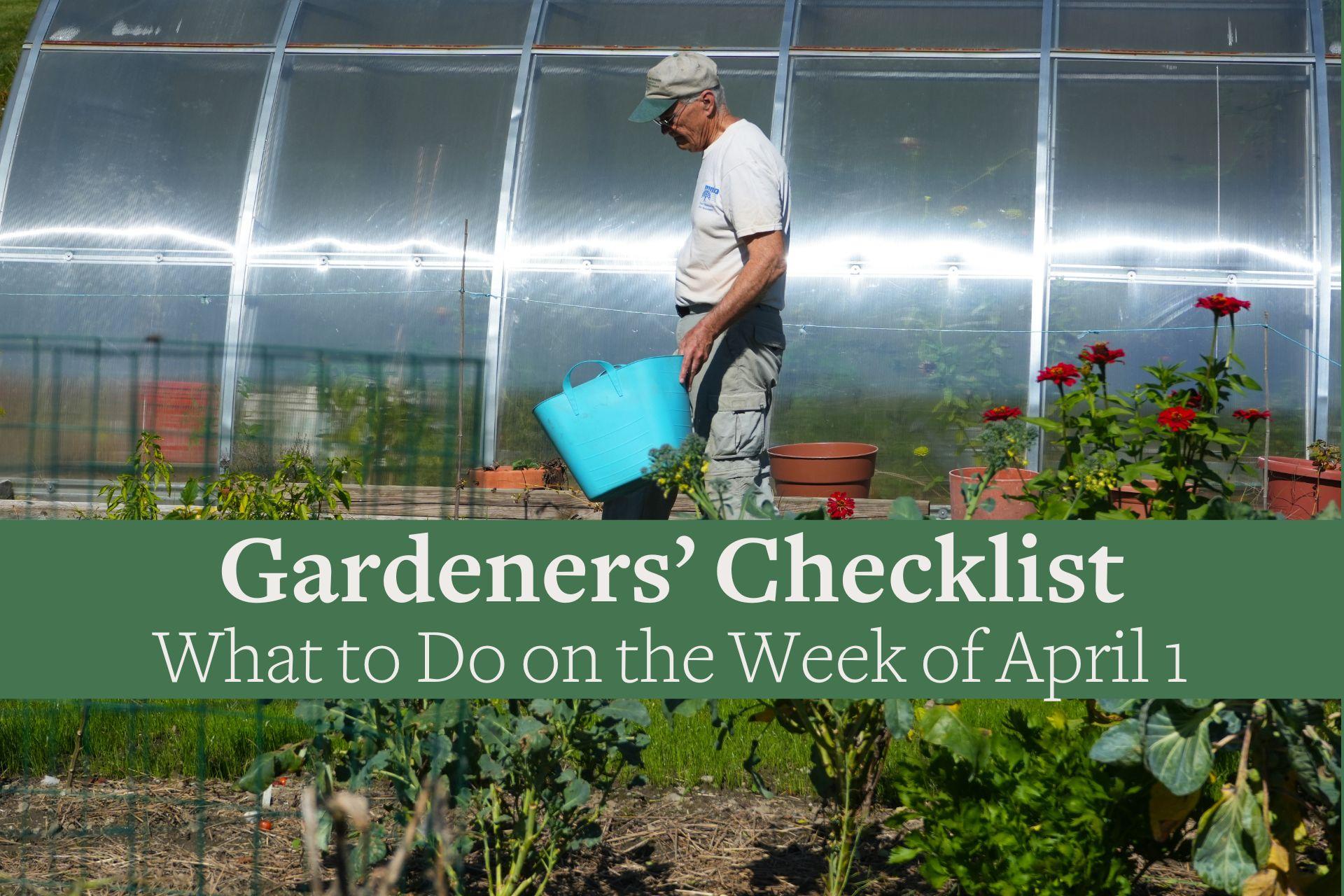You are here
Gardeners Checklist: Here Is What to Do on the Week of April 1
Gardeners Checklist: Here Is What to Do on the Week of April 1
By Ron Kujawski
* Consider the disease-resistant tomato varieties such as ‘Mountain Magic’, ‘Plum Regal’, ‘Legend’, ‘Best Boy’, ‘Celebrity’, ‘Stupice’, and ‘Sun Gold’ when starting tomato plants from seed this week. These varieties have good disease resistance or tolerance to many diseases, including early blight, late blight, verticillium wilt, and other common tomato diseases.
* Use cool white fluorescent lights for growing seedlings. Avoid incandescent lights since they promote stem elongation resulting in leggy seedlings. Vegetable and flower seedlings should be short and stocky, much like my Uncle Stumpy. Set up a timer so that lights will be on for 16 hours per day. The lights should be between three and five inches above the tops of seedlings.
* Start moving plants that need to be moved once the soil dries out after current rains run their course. I’ve been moving several small trees and shrubs, including blueberry bushes, to a new location and will continue to do so until buds open and new leaves begin to appear.
* Think about planting spring flowering bulbs now. Pay attention! I didn’t say plant the bulbs; I said think about it. Why? Because spring flowering bulbs are now in bloom or coming into bloom and this is a good time to look for gaps in existing plantings and for places where fall plantings of bulbs could go. Taking pictures of the yard and gardens now will help in making decisions on new planting sites once bulb sales begin in the fall.
* Place stepping stones in wide perennial borders. This will allow you to stroll among the plants without the risk of stepping on them, especially on newly emerging plants. It also allows you to get up close and personal with the plants as they grow and flower through the year.
* Cut back the tattered leaves of hellebores and bergenia. I love these evergreen perennials but their leaves do look pretty bad in early spring. Don’t worry, new leaves will soon emerge. While you’re surveying for tattered leaves, check out pachysandra beds. Pachysandra often takes a beating in winter and now is the time to clean out dead leaves and damaged stems. Plants with such damage are susceptible to leaf blight and stem canker diseases. Thinning out crowded beds of pachysandra will improve air circulation around the remaining plants and help reduce the chances of disease infections.
* Get your children or grandchildren involved in the vegetable garden. Studies have shown that children are more apt to eat vegetables that they themselves have grown. Hmm, I grow beets but I don’t eat them. However, I’m not a child, just an old curmudgeon.
Ron Kujawski began gardening at an early age on his family's onion farm in upstate New York. Although now retired, he spent most of his career teaching at the UMass Extension Service. He serves on Berkshire Botanical Garden’s Horticulture Advisory Committee. His book, Week-by-Week Vegetable Gardener’s Handbook, is available here.
Help Our Garden Grow!
Your donation helps us to educate and inspire visitors of all ages on the art and science of gardening and the preservation of our environment.
All Donations are 100 percent tax deductible.



